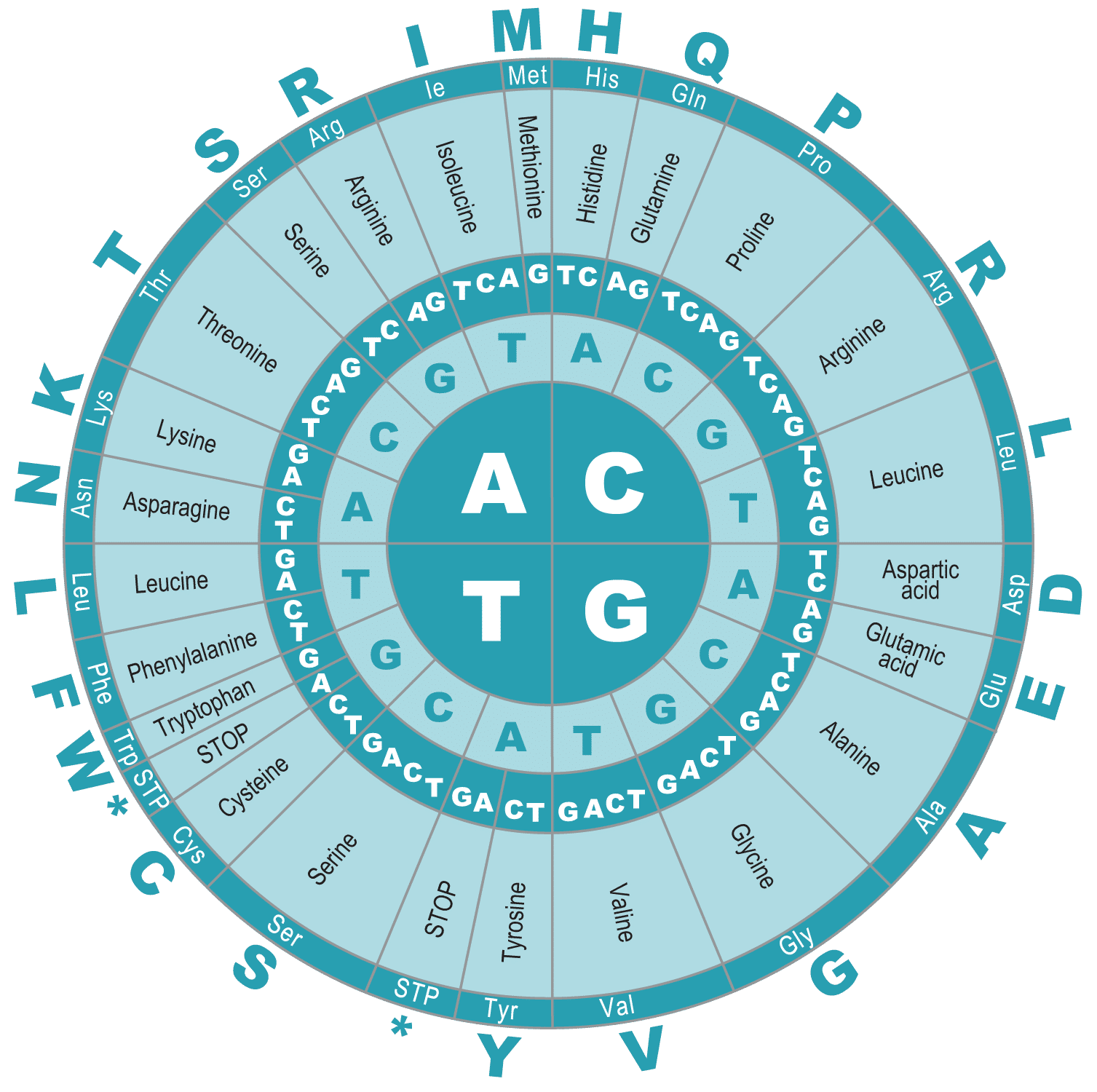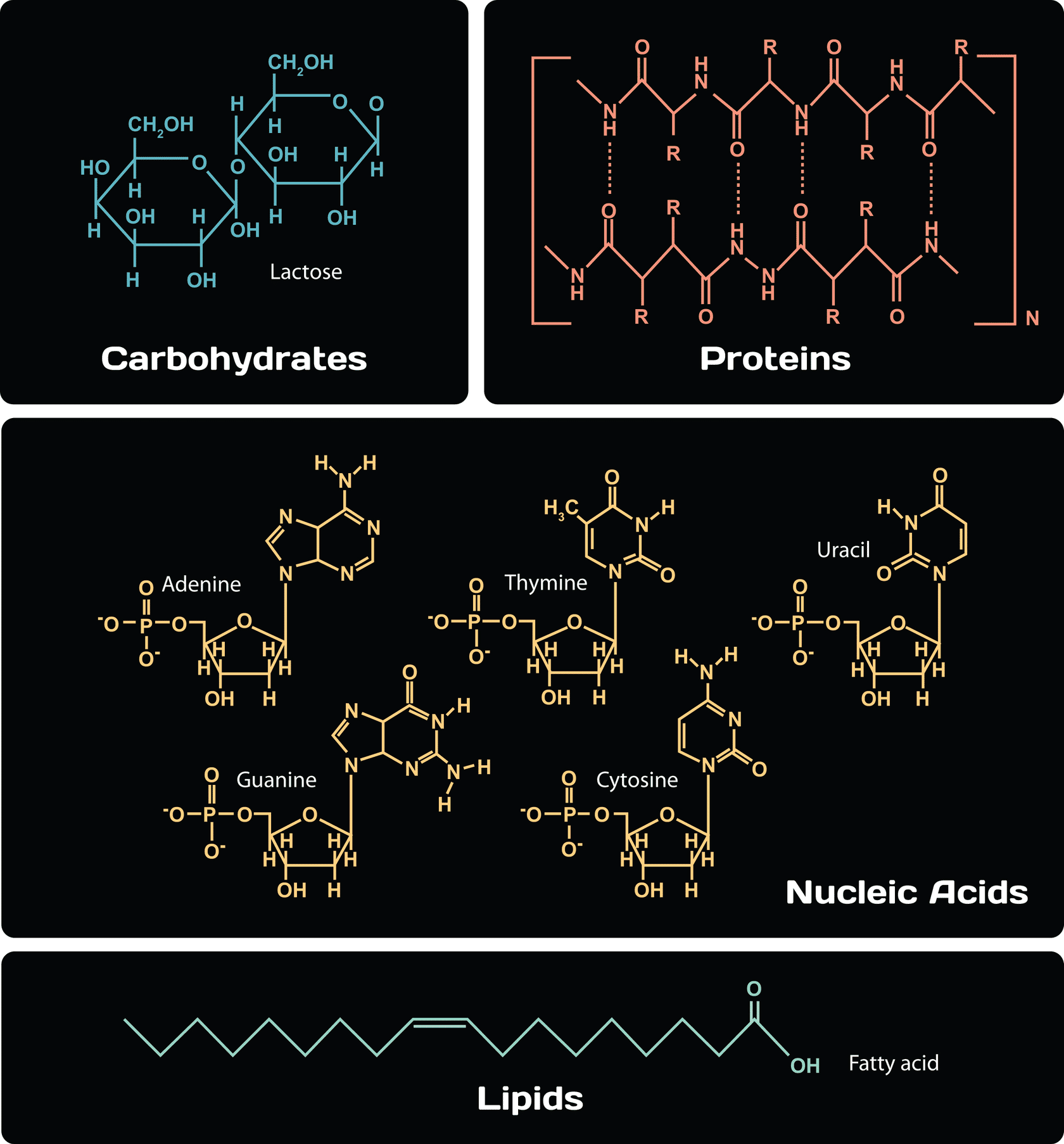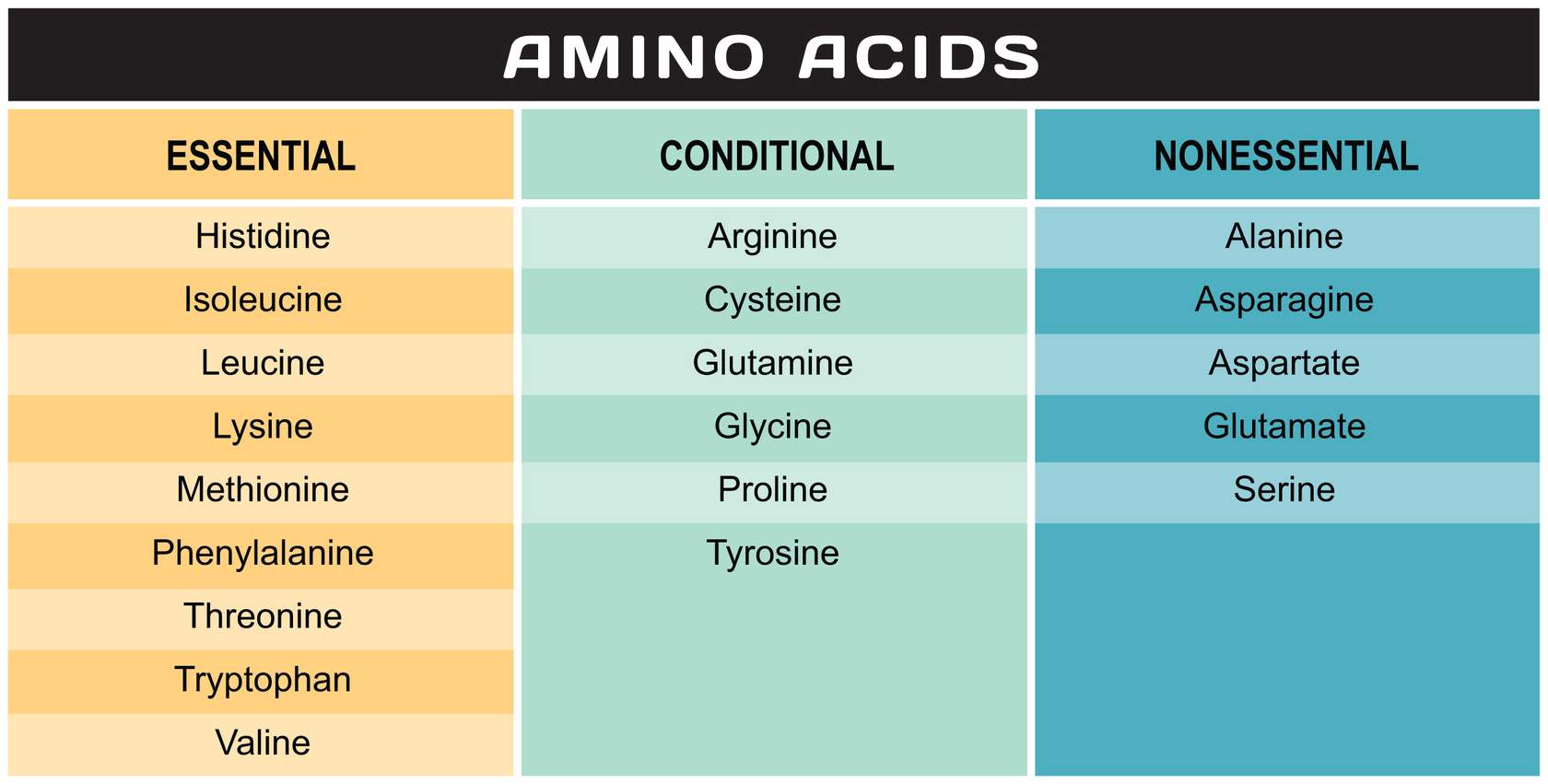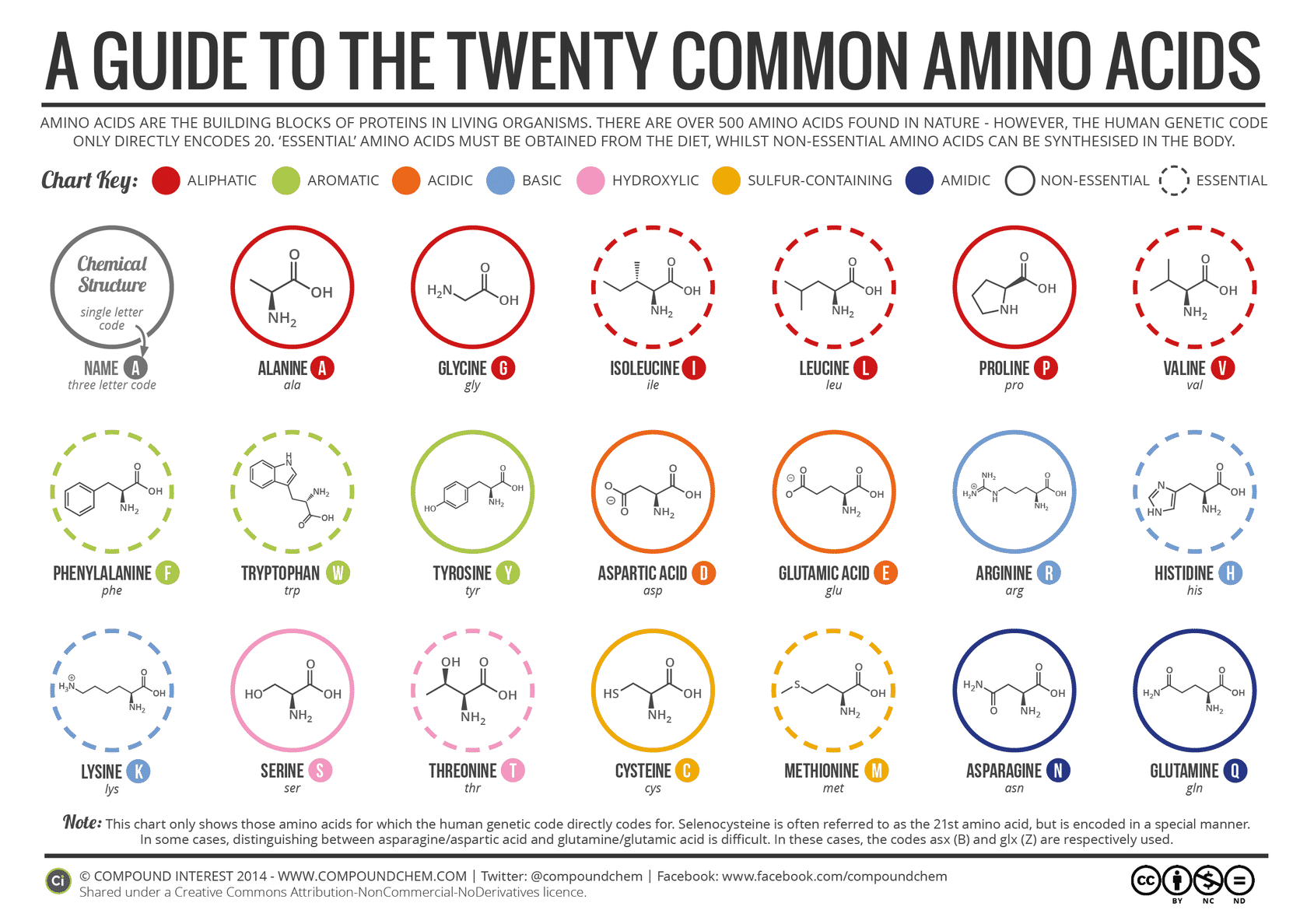Amino Acids
What Are Amino Acids?
Proteins are found in every cell of your body, and they are essential for building and maintaining your body. Proteins are made of "chains," or building blocks, and those chains are called amino acids. These chains of amino acids or proteins are combined or synthesized based on the specific DNA in your body. The amino acid chains are not able to be stored in your body, so proteins need to be synthesized every day.

All proteins contain a combination of twenty unique amino acids, and they are classified based on the number of amino acids in the particular chain. If the chain has fewer than fifty amino acids, it is called a peptide (and this is also called a protein). When two amino acids are joined, it is called a dipeptide. When three amino acids are joined, it is called a tripeptide. When more than ten amino acids are joined together, it is called a polypeptide.
What is an amino acid chain with less than fifty amino acids called? - A peptide
What is it called when two amino acids are joined together? - A dipeptide
What is it called when more than ten amino acids are joined together? - A polypeptide

©LUPC
Macromolecule Structures
Proteins are like carbohydrates and fats (lipids) in that they all contain carbon, hydrogen, and oxygen. On the other hand, proteins also contain nitrogen (while carbohydrates and fats do not), and proteins are the only components of food that provide the nitrogen your body needs to carry out certain bodily processes and/or functions.
The twenty amino acids in your body are classified as being either essential amino acids, nonessential amino acids, or conditional amino acids. These three types are described more thoroughly below.
Essential Amino Acids
An essential amino acid is an amino acid that is needed in your diet because your body cannot make it or cannot make enough of it to sustain your body's need for it. The essential amino acids include histidine, isoleucine, leucine, lysine, methionine, phenylalanine, threonine, tryptophan, and valine.
Arginine is essential for adolescents but is not essential for adults.
Nonessential Amino Acids
Nonessential amino acids are those amino acids that you do not need to consume or include in your diet because your body is capable of producing or synthesizing them. The nonessential amino acids include alanine, asparagine, aspartate, glutamate, and serine.
Tyrosine is produced from phenylalanine, so if you do not get enough phenylalanine in your diet, you will also have a deficiency in tyrosine.
Arginine is a nonessential amino acid for adults.
Conditional Amino Acids
Conditional amino acids are usually nonessential amino acids. In conditions such as illness or stress, the nonessential amino acids may become critical, and thus the name conditional amino acids. Conditional amino acids include arginine, cysteine, glutamine, glycine, proline, and tyrosine.
These are amino acids your body cannot make or cannot make enough of. - Essential amino acids
These are amino acids your body can make enough of for itself. - Nonessential amino acids
These are amino acids you may need to ingest (that you normally wouldn't need to) during injury, illness, or other strange events. - Conditional amino acids

© LUPC Above is a list of the amino acids. The far-left column contains the essential amino acids. The middle column contains the conditionally nonessential amino acids. The far-right column contains the nonessential amino acids. Note that arginine is in the conditionally nonessential category here. For adolescents, arginine is essential; arginine is not essential for adults.
Champion's Challenge (Optional)
This lesson has been a brief overview of amino acids. If you are interested in learning more about amino acids, create a chart of all twenty (some books note twenty-one) amino acids. Include in your chart whether each amino acid is essential, nonessential, or conditional. Draw the structure of each amino acid as well. Drawing the amino acids should give you a clue as to the basic blueprint of every amino acid. There is only a small branch on each amino acid that is unique. Finally, include in your chart whether each amino acid is aliphatic, aromatic, acidic, basic, hydroxylic, sulfur-containing, or amidic (see the chart below).
